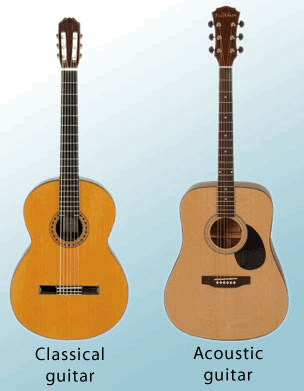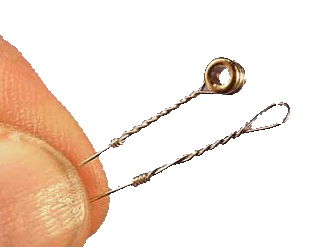Beginner's Guide to Strings
Beginner's Guide to Strings
Understanding instrument strings can be a challenge for beginners. Terms like Light, Medium and Heavy or numbers like 12-53 can leave you very confused.
We've put together this small guide to help you navigate the lingo. We'll use Guitar Strings for the bulk of this guide but we'll cover other common instruments towards the end. As always, if you have any questions shoot us an email to sales@strings.ie, we'll be delighted to help you.

Guitars
One of the most common questions we get form beginners is which strings do I need for my acoustic guitar?
To answer that it's important to understand the differences between Classical Guitars and Acoustic Guitars.

Classical Guitars use Nylon Strings. This is usually 3 plain Nylon Treble Strings and 3 Silver Wound Nylon Bass Strings. The strings are usually tied to the Bridge of the Guitar. You must never put Steel Strings on a Classical Guitar, the pressure of Steel Strings will damage the instrument!
Acoustic Guitars use Steel Strings. This is usually 2 Plain Steel Strings and 4 Wound Steel Strings. The wound strings are usually wound with Bronze or Phosphor Bronze.
Electric Guitars also use Steel Strings but are more commonly wound with Nickel.
If you're still not sure what strings your guitar uses please take a photo and email it to us at sales@strings.ie and we'll help you identify it.

Strings Gauges
Strings come in different thicknesses from light to heavy. Lighter strings are great for beginners and children as they are easier on the fingers while you are learning. Heavier strings provide more volume, tone and can take heavier playing styles. We recommend starting out with lighter strings and as you progress you can try a heavier gauge.
Acoustic & Electric Guitars often use terms like Extra Light, Light, Medium, etc. That's self explanatory but you will also noticed numbers such as 11-52 or 12-53. This refers to the Top and Bottom Strings of the set. So for example; 12-53 means the thinnest (treble) string is a .012 gauge and the thickest (Bass) string is a .053. In the string industry we use these numbers just as a guide, you'll often hear people say "I use 12's on my Guitar" meaning they will use a 12-53 or 12-54 gauge range set of strings. It's just a rough guide. In our product details you will find a full list of gauges for all 6 strings in a set.
One more thing to mention which is a bit confusing is that while you might be tempted to go for Medium Gauge thinking that's a nice in between place to start, Medium is usually considered heavy among guitarists. Usually in the 13-56 range, medium is hard on the fingers so best avoid for children and beginners. Light, Extra/Light is recommended.
Classical Guitar Strings tend to be referred to in more simple terms of Light Tension, Normal Tension, Heavy Tension and so on.

Single Strings vs String Sets
We sell Single Individual Strings as well as sets.
Single Strings are ideal if you just want to replace one broken or missing string or if you want some spares if you break a particular string often. One thing to be aware of is if you have an old guitar that hasn't been played for years with a missing string, replacing just that string will result in one extra bright new string among 5 old sounding strings. It's often worth buying a set and just taking the opportunity to give the guitar a good clean with a fresh set of strings.

Recommended Strings
Like all things, strings come in many variations and finding the right strings for your instrument and playing style takes experience and experimentation. But for beginners you have to start somewhere so below are some of our most popular sellers.
Electric Guitar
Acoustic Guitar
Classical Guitar
- D'addario EJ27N Strings
- D'addario Pro Arte Strings
- Martin M260 Ball End - Most classical guitar strings are tied on but these have a ball end so no need to tie
Violin Strings

Folk Instruments

Folk instruments such as Banjo, Mandolin, Bouzouki often take either Loop-End Strings or Ball-End Strings or both.
Loop-End strings are fixed to small hooks so check your instrument requirements before ordering and if you're not sure please email us a photo to sales@strings.ie so we can advise you.

Violin Strings
Violin strings usually come in different sizes and tensions. 4/4 being a standard sized violin, then they get small, 3/4 for example. The smaller ones suit kids. Most violin sets we stock are 4/4 but we do have some 3/4 and 1/2 size sets.
Normal tension is what most players use.

Tools and Parts
You may want to get yourself a string winder which speeds up restringing considerably. We have a Basic Winder in stock or the very popular Pro Winder.
You also might want to purchase a digital tuner.
We have a large selection of Plectrums in stock and if you're not sure what to get have a look at our Random Plectrum Pack for a selection of 10 plectrums, you're sure to find one you like!
For acoustic guitars missing a bridge pin we have those too!
Recent Posts
-
Lighter Gauge Guitar Strings
Lighter Gauge Guitar Strings: A Godsend for Achy Hands and Antique Guitars Playing the guitar shou …20th May 2024 -
Strings.ie Customer Guide
We've put together this guide for our customers to get the most out of strings.ie. Let's get stuck i …14th Jan 2023 -
Free Plectrums Gauges
Regular customers know we like to throw in a couple of complimentary plectrums with orders. We try t …27th May 2022

